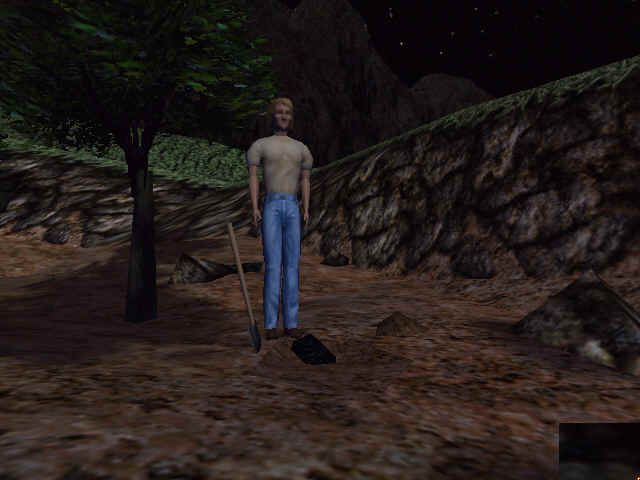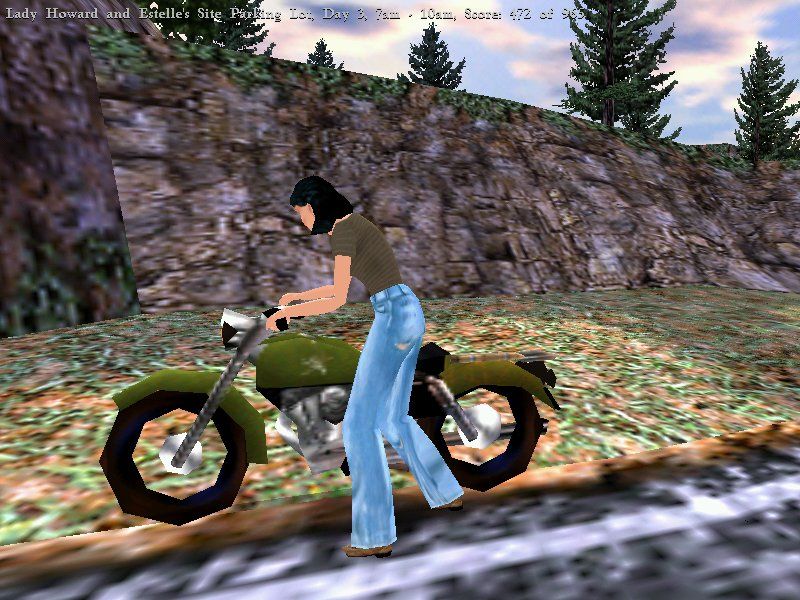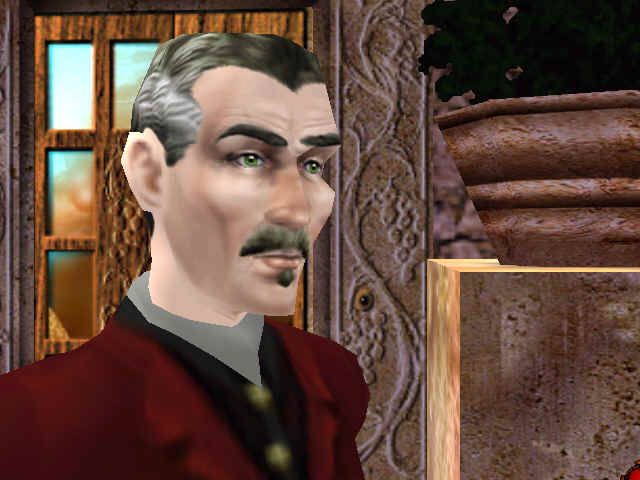Retro Replay Review
Gameplay
Gabriel Knight 3: Blood of the Sacred, Blood of the Damned opens with a clear departure from its 2D predecessors by embracing full 3D environments, giving players the freedom to explore Rennes-le-Château and its eerie surroundings in a new visual dimension. Whether you choose to guide Gabriel or his loyal assistant Grace Nakimura, the core gameplay loop revolves around meticulous exploration, item collection, and multi-layered puzzle solving. From picking locks in ancient crypts to piecing together obscure clues from dusty tomes, each challenge demands both logical reasoning and careful observation.
Interaction is handled through a straightforward point-and-click interface: click on people or objects to trigger context-sensitive actions such as “talk,” “look,” or “use.” While some may find the system intuitive, occasional pixel-hunting can slow the pace—objects of interest sometimes require pixel-perfect clicks. To alleviate this, the game offers an optional first-person “camera” mode, allowing you to pan around environments more freely and spot hidden details that might otherwise slip under the radar.
Puzzle design in Gabriel Knight 3 ranges from classic inventory riddles—combining curious items to unlock new paths—to in-depth investigative segments that require you to cross-reference documents, interrogate locals, and follow cryptic religious symbolism. The lore-driven puzzles, especially those tied to early Christian artifacts and legends, are among the most rewarding. They ask you to absorb the historical context presented in the journals and conversations, then apply that knowledge in inventive ways, making you feel like a true Schattenjäger on the trail of the supernatural.
Graphics
Transitioning to 3D was an ambitious move for a late-’90s adventure title, and while Gabriel Knight 3’s visuals show their age by modern standards, they still possess a uniquely immersive charm. The polygonal character models are reasonably detailed for the era, and their textured clothing and carefully designed facial animations lend a surprising amount of personality to each NPC. Gabriel’s sharp jawline and Grace’s thoughtful expressions help convey the story’s tension and the duo’s evolving dynamic.
Environmental art is where the game truly shines. From the sun-bleached stone walls of the French village to the candlelit corridors of subterranean crypts, the lighting design crafts an atmosphere that feels both authentic and foreboding. Subtle ambient sounds—rustling leaves, distant church bells, dripping water—are intricately woven into the level design, enhancing the sense of place. Although the frame rate can stutter in more crowded scenes, the overall aesthetic remains compelling.
Camera control offers a mix of fixed angles in tighter interiors and fully rotatable 3D views in open areas. This hybrid approach sometimes results in abrupt perspective shifts, but it also allows for cinematic reveals and carefully framed puzzle setups. Occasional clipping and texture pop-ins remind us of the technological limitations of the time, yet they seldom detract from the game’s hauntingly beautiful world.
Story
At its core, Gabriel Knight 3 weaves a rich narrative tapestry that blends historical intrigue with supernatural suspense. Gabriel, once a New Orleans bookstore owner turned Schattenjäger, and his resourceful assistant Grace Nakimura travel to the sleepy French town of Rennes-le-Château to unravel the kidnapping of Prince James of Albany’s infant son. What begins as a straightforward detective assignment quickly escalates into a labyrinthine mystery stretching back to the dawn of Christianity.
The storyline delves into the complex lore surrounding sacred relics, religious schisms, and secret orders. As Gabriel and Grace sift through coded parchments, chase elusive leads, and confront enigmatic villagers, the plot unfurls layer by layer. Twists abound as supernatural forces emerge from the shadows, challenging your assumptions and testing the protagonists’ courage. Throughout, the game maintains a fireside-story ambiance, with well-written dialogue that balances wit, scholarly banter, and genuine stakes.
Complementing the principal narrative are beautifully crafted side encounters—whether interviewing a suspicious priest or decoding cryptic symbols etched into ancient rocks. These moments enrich the central plot, offering deeper insights into character motivations and regional folklore. By the time you unearth the truth behind the “Blood of the Sacred, Blood of the Damned,” you’ll have experienced a tale that feels both epic in scope and deeply personal.
Overall Experience
Gabriel Knight 3 delivers an adventure that is part detective thriller, part gothic horror, and wholly captivating for fans of story-driven gameplay. While the transition to 3D introduces occasional interface frustrations and dated visuals, the game’s strengths—involving puzzles, immersive environments, and a richly layered narrative—more than compensate for technical quirks. The first-person camera is a welcome feature for puzzle hunters, and the dual-protagonist dynamic adds replay value as you witness key events from different perspectives.
Voice acting remains a highlight, with strong performances bringing depth to Gabriel’s world-weary cynicism and Grace’s sharp intelligence. The musical score—an evocative blend of Gregorian chants and orchestral swells—anchors the game’s atmosphere, intensifying moments of revelation and dread. Whether you’re a longtime follower of Jane Jensen’s series or a newcomer seeking a mature, texturally deep adventure, this installment offers a memorable journey into the heart of myth and faith.
In summary, Gabriel Knight 3: Blood of the Sacred, Blood of the Damned stands as an ambitious experiment in evolving classic point-and-click design into the 3D realm. Its strengths lie in its compelling story, intricate puzzles, and evocative settings. Though not without its rough edges, it remains a must-play for enthusiasts of narrative-rich, puzzle-centric adventures who appreciate a dash of the supernatural in their historical mysteries.
 Retro Replay Retro Replay gaming reviews, news, emulation, geek stuff and more!
Retro Replay Retro Replay gaming reviews, news, emulation, geek stuff and more!









Reviews
There are no reviews yet.